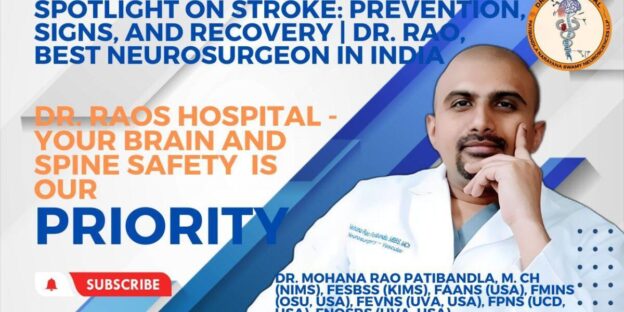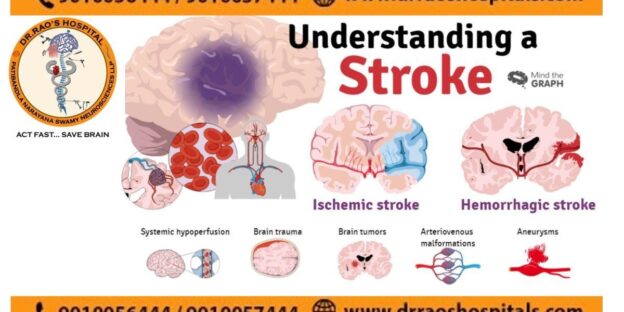25 frequently asked questions about stroke, along with their answers:
1. What is a stroke?
- A stroke, often called a “brain attack,” occurs when the blood supply to part of the brain is interrupted or reduced, leading to brain damage.
2. What are the types of strokes?
- There are two main types: ischemic stroke, which results from a blood clot, and hemorrhagic stroke, which results from bleeding in the brain.
3. What are the common signs of a stroke?
- The common signs include sudden numbness or weakness in the face, arm, or leg, confusion, trouble speaking or understanding, difficulty seeing, and a severe headache.
4. What causes a stroke?
- Blood clots often cause ischemic strokes, while hemorrhagic strokes result from a ruptured blood vessel. Risk factors include high blood pressure, smoking, and diabetes.
5. How is a stroke diagnosed?
- Diagnosis typically involves a physical examination, imaging tests (CT scan or MRI), and blood tests to determine the type of stroke.
6. What are the risk factors for stroke?
- Risk factors include high blood pressure, smoking, obesity, diabetes, and family history of stroke.
7. Can strokes be prevented?
- Yes, adopting a healthy lifestyle, managing risk factors, and taking medications as prescribed can reduce the risk of stroke.
8. What is a transient ischemic attack (TIA)?
- Also known as a “mini-stroke,” a TIA is a temporary disruption of blood flow to the brain, often with similar symptoms but no lasting damage.
9. How is a stroke treated?
- Treatment varies depending on the type of stroke but may include medication, surgery, or rehabilitation.
10. What is the prognosis for stroke survivors?
The prognosis depends on the severity of the stroke and the individual. Some people make a full recovery, while others may have lasting effects.
11. What is post-stroke rehabilitation?
Rehabilitation includes physical, occupational, and speech therapy to help stroke survivors regain function and independence.
12. Can stroke be hereditary?
Family history can increase the risk, but most strokes are related to lifestyle and other factors.
13. What are the long-term effects of a stroke?
Long-term effects may include weakness, paralysis, speech difficulties, and cognitive changes.
14. Can children have strokes?
Yes, children can have strokes, though they are less common. A pediatric stroke is a medical emergency.
15. How soon should a stroke be treated?
Treatment should be administered as soon as possible. The saying “time is brain” emphasizes the importance of swift action.
16. Can strokes be fatal?
Yes, strokes can be fatal. The outcome depends on the stroke’s type, severity, and treatment speed.
17. Can strokes cause memory problems?
Strokes can lead to memory and cognitive issues, often requiring rehabilitation and therapy.
18. Are there support groups for stroke survivors?
Many support groups offer emotional and practical support for stroke survivors and their families.
19. Can a stroke affect a person’s personality?
Yes, strokes can impact a person’s personality and behavior, leading to emotional and mood changes.
20. What is the connection between atrial fibrillation and stroke?
Atrial fibrillation is a risk factor for stroke as it can lead to blood clots that travel to the brain.
21. What is the difference between a stroke and a heart attack?
A stroke affects the brain due to a lack of blood flow, while a heart attack affects the heart due to a blocked blood vessel.
22. Can stress cause a stroke?
Prolonged stress may increase stroke risk by increasing blood pressure and other risk factors.
23. How is a stroke in women different from one in men?
Stroke symptoms can be similar, but women may experience atypical signs such as hiccups, nausea, and shortness of breath.
24. Can you drive after a stroke?
Driving eligibility depends on individual circumstances and local regulations. Stroke survivors may need to pass medical assessments.
25. Can strokes be prevented through diet and exercise?
A healthy diet and regular exercise can help manage risk factors and reduce the likelihood of stroke.
It’s important to remember that these answers are for informational purposes and should not replace professional medical advice. If you or someone you know is at risk for or has experienced a stroke, consult a healthcare provider for proper guidance and care.
Dr. Rao’s Hospital, under the esteemed guidance of Dr. Mohana Rao Patibandla, offers comprehensive stroke treatment, providing a lifeline to patients during their most critical hours. Recognizing that time is of the essence in stroke care, the hospital is committed to delivering immediate medical attention within the crucial first 24 hours, where the window for intervention is most significant. With cutting-edge technology and a highly skilled medical team, including Dr. Rao, patients receive the full spectrum of stroke care, from rapid diagnosis to innovative treatments, ensuring the best possible outcomes in their journey to recovery.







